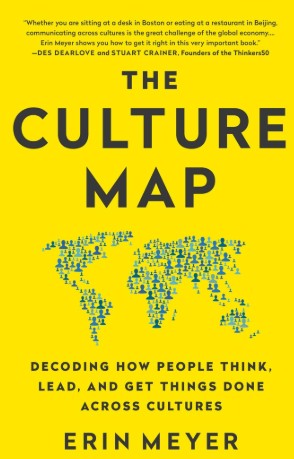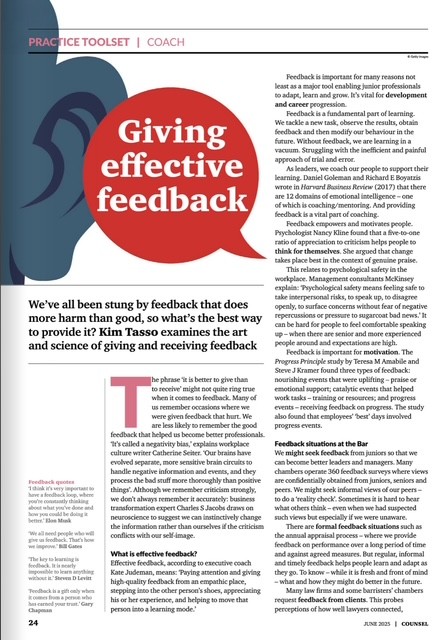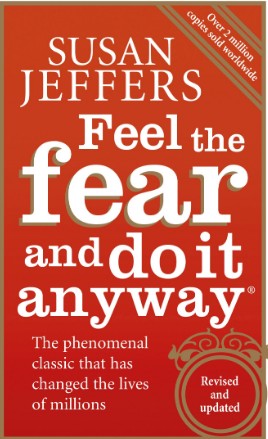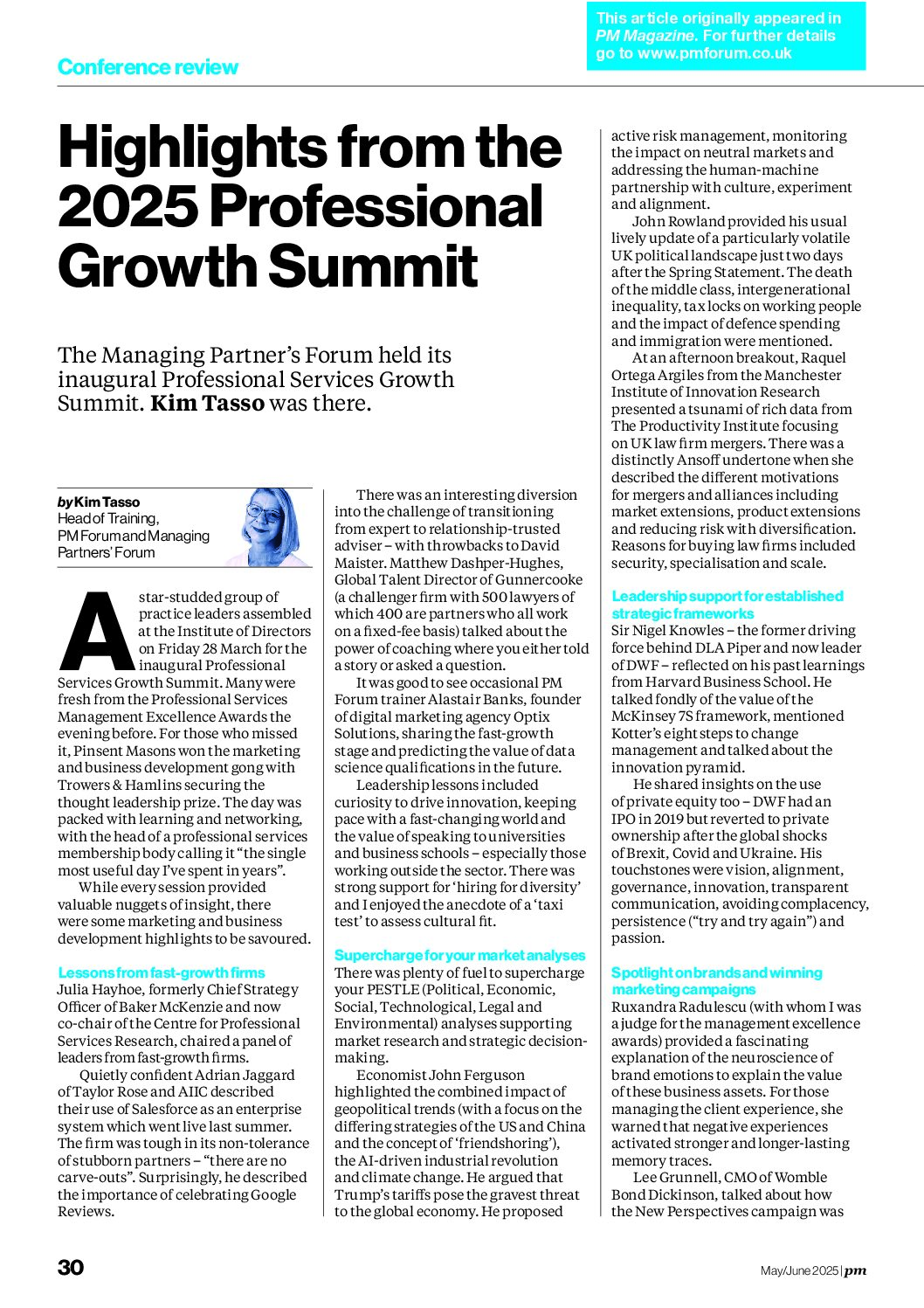
This post contains summaries of two research reports on Client Experience Management CEM – one focusing on law firms and the legal market and the other of B2B customer experience – where the legal sector is considered – as a comparison. Client Experience Management CEM – Two research reports.
The unbalanced scorecard – How firms profit by recalibrating service performance and value for money (Nisus Consulting, 2016)
Tim Nightingale and his consultancy Nisus are well known to those in legal services marketing and his June 2016 report into client satisfaction is first class.
He has developed a metric (based on online ratings from the UK and internationally by over 2,000 people and interviews with a cross-section of 12 General Counsels) called Performance and Value Index (PVI) which ensures that the external client view rather than the internal management view leads strategy. He starts on a positive note “The standard of service delivery in the legal sector is high and rising” and comments “The best performing firms on service and value are rewarded with loyal clients”.
The 20 criteria used by the metric algorithm are:
- Responsiveness
- Proactive communication
- Availability
- Strategic thinking
- Team work
- Management
- Technical expertise
- Offices
- Technology
- Associated materials
- Professionalism
- Personal chemistry
- Market understanding
- Understanding client culture
- Commerciality
- Project planning
- Problem solving
- Advice quality
- Documentation quality
- Progress updates
The law firms rated most highly are:
- Addleshaw Goddard (“delivers on both higher value, higher complexity matters but also the higher volume and lower value work”)
- Osborne Clarke
- Allen & Overy
- Shoosmiths
- Herbert Smith Freehills
- DWF (“surpassing all others in value for money”)
- Slaughter & May
- Clyde & Co
- Ashurst
- Squire Patton Boggs
DAC Beachcroft has “an audacious lead on compliance with agreed budgets”. It’s good to see so many regional firms in the top 10 as well as some City and Magic Circle firms. The report indicates “looking at respondent loyalty scores (Net Promoter Score – NPS), we find a strong correlation with personal chemistry”.
It also notes: “Not all service delivery dimensions are equally important. Assurance (strategic thinking, management, team work and technical expertise) and empathy (personal chemistry, market understanding, understanding of client culture and commerciality) matter most and should therefore be the primary focus for any drive to differentiate”. On the downside “lawyers do not make good project managers”.
It was interesting to read some of the comments from clients:
“They have all got partners who are absolutely focused incessantly on client service”
“I know who is working on my projects and this saves me time and repetition”
“If you can have the personal chemistry with the technical expertise then it’s a compelling combination”
“Law firms are woeful in terms of their ability of either sticking to a budget or managing their clients’ expectations”
“It should be no surprise that often clients want strategic thinking – they take the legal thinking as a given”
B2B Customer experience: Winning in the moments that matter (KPMG Nunwood, 2017)
This research is based on detailed research into 130 businesses surveying 3,000 members of decision making units (DMUs) across the UK and the US in six sectors: banking, insurance, telecoms, legal, business goods and business technology.
The importance of relationship
The authors note “At the heart of an experience is a relationship – it is built in different ways in the B2B world and is multi-faceted”. Hey observe that “the relationship manager plays a pivotal ‘human connection’ role” and “first impressions are vital and define he level of forgiveness for issues”. Business-to-human is more important than B2C or B2B.
“The moments that matter in a B2B relationship are those that give the client cause to reflect on the nature of the relationship and consider whether the brand promise has been kept”. The report authors reflect on “consumerisation” as the cycle of rapidly escalating consumer expectations spills over into the B2B world.
The report shows that when a relationship is founded on common values, culture and behaviours then it is very difficult to break. Understanding the relationship cycle is key – the end-to-end experience a client has of its vendor.
The importance of referrals
Three quarters of those surveyed consider customer experience as a major factor in supplier choice. 84% of B2B sales begin with a referral. 90% of B2B purchases are influenced by peer recommendations.
Pillars of customer experience
As with the consumer Customer Experience Excellence analysis, the US B2B experience considerably exceeds the UK. There are six pillars of the customer experience – at the heart of which lies the psychology of experience:
- Personalisation (individualised attention to drive an emotional connection)
- Integrity (being trustworthy)
- Expectations (managing, meeting and exceeding customer expectations)
- Resolution (turning a poor experience into a good one)
- Time and effort (minimising customer effort and creating frictionless processes)
- Empathy (achieving an understanding of the customer’s circumstances to drive deep rapport)
The importance of trust
The report considers the work of Roy J Lewicki who differentiates between Calculus Based Trust (CBT) which occurs in the early stages of a relationship – where an individual calculates how the other party is likely to behave in a given situation and extends their trust only so far as is necessary to achieve a positive outcome.
Identification Based Trust (IBT) is when there is a deeper understanding of each other from repeated interactions where each party identifies with the goals and objectives of the other. This is a more emotionally driven bond which is often difficult to break. This is interesting when compared to the understanding of rational and emotional trust in professional services.
They outline the phases of relationship connection as:
- Wooing
- Purchase
- Honeymoon
- Forming
- Storming
- Norming
The moments that matter are then mapped against the moments of failure. The authors argue that these trust differences have important implications for how companies “onboard” customers. While recognising that relationships in the B2B context are much more complex than in the consumer world, they identify four relationship models which have a definite impact on how the relationships are built and experienced – these have useful insights for professional service firms and Key Account Management (KAM) programmes in particular:
- Relationship manager owns the relationship
- Relationship manager is the main face of the supplier with a team supporting this individual
- Client has an entire team at its disposal and subject matter experts at hand
- Fully automated operational solution – no human interaction is required
Legal sector insights
“Organisations working in both consumer and business spaces have a definite advantage in terms of knowledge and processes”. And this bodes well for the often smaller law firms who serve private clients as well as commercial clients.
In the legal sector the main relationship manager models in use are; relationship manager with sole responsibility (32%), relationship manager and supporting team (23%), multiple contacts depending on specific need (32%) and fully automated operational solution (13%).
The report notes that clients frequently prefer to have one person to deal with and have them acting as their ambassador – the one person in the organisation that champions their interests and ensures the services are provided to them in the highest standard.
The sole relationship model offers much higher levels of satisfaction as well as a better experience across the pillars. The report notes that across both the UK and the US, legal organisations embrace this approach and offer their clients a main point of contact who ensures required internal resources are correctly allocated.
Some other articles on CEM
Why Client Experience Management CEM is all the rage… (kimtasso.com)
Client Experience Management (CEM) in professional service firms (kimtasso.com)
Client Experience Management (CEM) – Research into the client journey (kimtasso.com)
Client Experience Management (CEM) – Nine takeaways (kimtasso.com)









